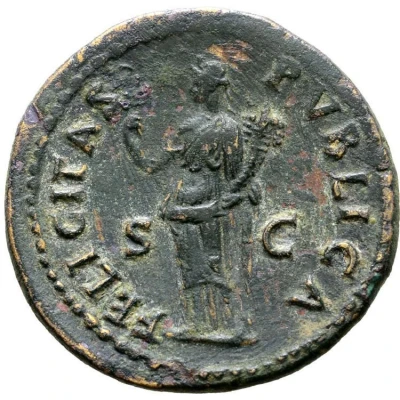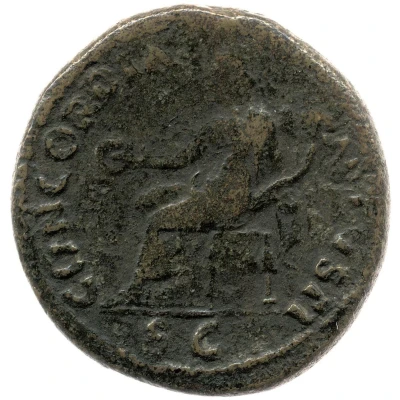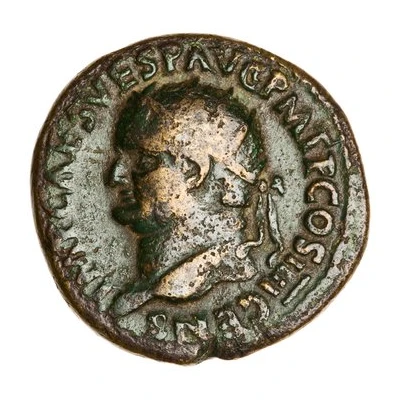


© Roma Numismatics Limited
Dupondius - Vespasian FELICITAS PVBLICA S C; Felicitas
73 year| Bronze | 11.1 g | 27 mm |
| Issuer | Rome › Roman Empire (27 BC - 395 AD) |
|---|---|
| Emperor | Vespasian (Titus Flavius Vespasianus) (69-79) |
| Type | Standard circulation coin |
| Year | 73 |
| Value | 1 Dupondius = ⅛ Denarius |
| Currency | Denarius, Reform of Augustus (27 BC – AD 215) |
| Composition | Bronze |
| Weight | 11.1 g |
| Diameter | 27 mm |
| Shape | Round (irregular) |
| Technique | Hammered |
| Demonetized | Yes |
| Updated | 2024-10-06 |
| Numista | N#249486 |
|---|---|
| Rarity index | 95% |
Reverse
Felicitas, draped, standing left, holding winged caduceus upwards in right hand and cornucopiae in left.
Script: Latin
Lettering: FELICITAS PVBLICA S C
Translation:
Felicitas Publica. Senatus Consultum.
Good fortune of the public. Decree of the senate.
Comment
Mass varies: 10.089–12.11 g;Source: Online Coins of the Roman Empire (OCRE)
Interesting fact
The Dupondius coin featuring Vespasian and the inscription "FELICITAS PVBLICA S C" is interesting because it was minted during a time of significant economic and political change in the Roman Empire. The coin was issued during Vespasian's reign (69-79 AD), who was known for his efforts to restore stability and prosperity to the empire after a period of civil war and economic decline. The coin's design, featuring the goddess Felicitas, symbolizes the Roman people's desire for happiness and prosperity under Vespasian's rule. Additionally, the use of bronze as the material for the coin reflects the empire's shift towards a more affordable and accessible currency, as opposed to the more valuable gold and silver coins that were previously used. Overall, this coin provides a unique insight into the economic and political climate of the Roman Empire during Vespasian's reign.



